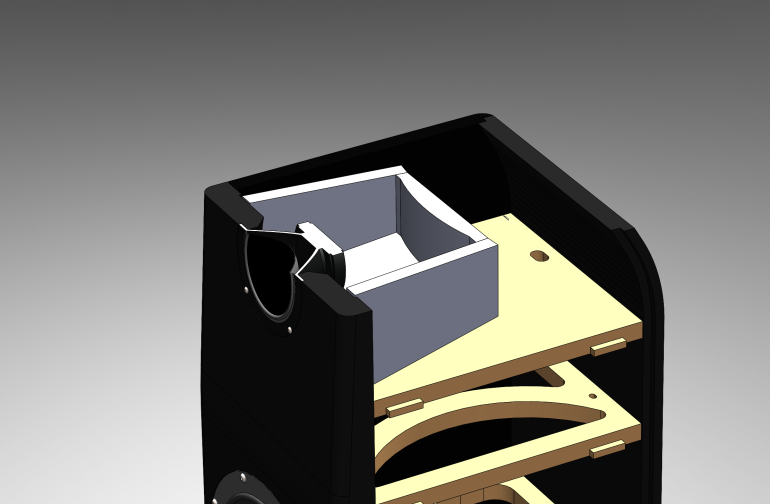“When the room goes quiet, the voice steps forward.”
If music has a home, it’s the midrange. This is where voices reside, where pianos become human, where strings tell you what the rosin smells like. The Reference A midrange lives in its own sealed and heavily lined chamber. The walls angle away—what we call a splayed back—so reflections don’t stack up behind the cone and reappear as glare a moment later.
Getting that geometry right wasn’t guesswork. We ran finite-element simulations of the chamber and its throat profile, then let an AI evaluator score the results across 30,000 design candidates. Each iteration nudged the shape, angles, and throat chamfer to reduce stored energy, smooth pressure gradients, and keep the polar pattern tidy at the handoff. The winners were then built and measured, closing the loop until the model and the microphone agreed.
Because the volume is optimized and pressure is controlled, the cone barely moves across the vocal band. That means lower distortion, lower intermodulation with treble, and a freedom from the box tone that can make some speakers sound “hi-fi” but not human. Turn it up and voices simply scale. Turn it down and the micro-stuff—the breath, the consonant, the hall—stays intact.
“We didn’t find the midrange chamber—we proved it, 30,000 times.”
The sealed approach also keeps the midrange’s polar pattern clean at the transition to the tweeter, supporting the steadier directivity that makes imaging feel like sculpture instead of sketch.
